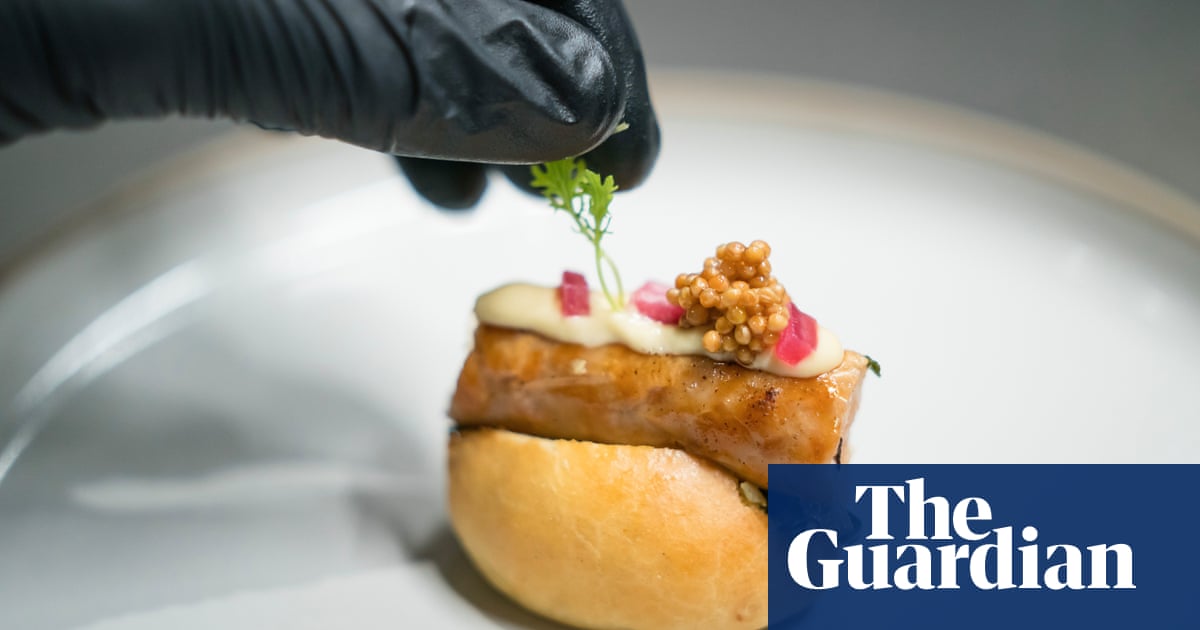Even before I see the sausages, I am greeted by their rich, meaty aroma. Sizzling in a pan of foaming margarine, they look like regular chipolatas being fried up for a Sunday breakfast, their pink-grey exteriors slowly turning a rich caramel brown.
Consisting of 28% pork fat, bulked out with textured pea, chickpea, soy and wheat protein, these mini-bratwursts would happily sit inside a hotdog or next to a plate of mashed potato. But these are no standard bangers.
Cultivated from cells plucked from a fertilised pig egg and grown inside steel fermentation vessels like those used to make beer, these slaughter-free sausages are being touted as the future of sustainable and ethical meat production.
I’m at Meatable’s laboratories in the Netherlands, attending one of the first legally approved tastings of cultivated meat in Europe – and the first of a cultivated pork sausage.
Such tastings are considered a crucial step on the road to commercialisation of lab-grown meat, providing a rare opportunity for a handful of people – including the company’s co-founders – to sample the product and provide feedback on its taste and mouthfeel, before a final recipe is submitted for regulatory approval.
Until recently, the only country where such tastings were permitted was Singapore, but in July 2023, the Netherlands became the first EU member state to give the green light to such events, after the US did the same earlier that year.
Meatable is one of a growing number of startups that hope to satisfy the world’s appetite for meat without harming animals or damaging the planet. For Meatable’s co-founder and chief technical officer, Dr Daan Luining, sausages are a logical starting point: “If I were able to make a fully vascularised, functional steak at the moment, I would probably be receiving a Nobel prize,” he said. “Also, the question is, do you want to do full biomimicry, or just get a product on the market that people enjoy to eat?”
Walking around Meatable’s labs, I feel about as far away from a farmyard as it is possible to get. In a gleaming, light-filled office block in Leiden’s suburbs, the company’s technicians wear goggles and lab coats rather than mucky overalls, and instead of grunts, squeals and the squelch of mud, the only sound is the gentle whir of machines tending flasks of microscopic cells. I peer inside a plastic beaker and spy a snowstorm of swirling white specks surrounded by clear, straw-coloured liquid. These are clumps of fat cells, grown from a bank of pig stem cells through the turning on and off of specific genes – a process that takes only four days.
From here, they will be transferred to a fermentation vessel and left to multiply, resulting in a product that looks like a beige block of lard. This will then be combined with vegetable proteins to create sausages. Meatable is also growing pork muscle cells, but is focusing its efforts on fat cells for now, because fat is where much of meat’s flavour comes from.
It is hoping to launch its sausages in Singapore later this year, pending approval from Singapore’s Food Agency. Meatable is also in discussions with the US Food and Drug Administration about submitting a regulatory application there. At first, these sausages are likely be available on restaurant menus only, but Meatable’s goal is to create a mass-market product costing the same as a regular sausage, available to consumers everywhere – including the UK. “British bangers – I think that would be a massive hit,” said Luining. However, because the US market is bigger, their plan is to launch them there first.
They’re not the only company with sausages in their sights. In February, Oxford-based Ivy Farm Technologies hosted a small tasting of its cultured scotch eggs, which it hopes to launch in the UK in early 2025. It is one of two companies to have submitted applications to the UK’s Food Standards Authority for cultivated cell-based products so far; a ruling is expected by the end of the year. It is also working on cultivated pork sausages.
Other companies are working on cultivated beef steaks, chicken and pork pieces, foie gras, sushi-grade salmon and even octopus meat. Another Dutch company, Mosa Meat, is gearing up for the first formalised tastings of its cultivated beef burgers in the Netherlands, ahead of a planned launch in Singapore.
The cooking is over, and it’s time to put Meatable’s sausages to the test. I’m given bite-size chunks of a vegan and a cultivated meat sausage to try. Both feel firm when I press down on them with a fork, but the meat one glistens seductively with juicy, greasy loveliness. I put it in my mouth and chew. The texture is meaty, and the taste is, well, sausagey. It feels somewhat underwhelming because it tastes and feels just like eating a regular sausage.
Luining laughs when I tell him this. “How many times has your mind been blown by eating a sausage?” he says. “The answer is never. And that’s the point.
“If we went out for breakfast and I gave this to you, you probably wouldn’t even realise. Even though the plant-based alternatives are pretty good, you do realise.
“People have all these feelings and emotions and projections on this product because it came from a lab. But cereal also comes from a lab. They think, ‘No animals; well, what does that mean?’ And then they eat it, and they’re like, ‘Oh, who cares?”







